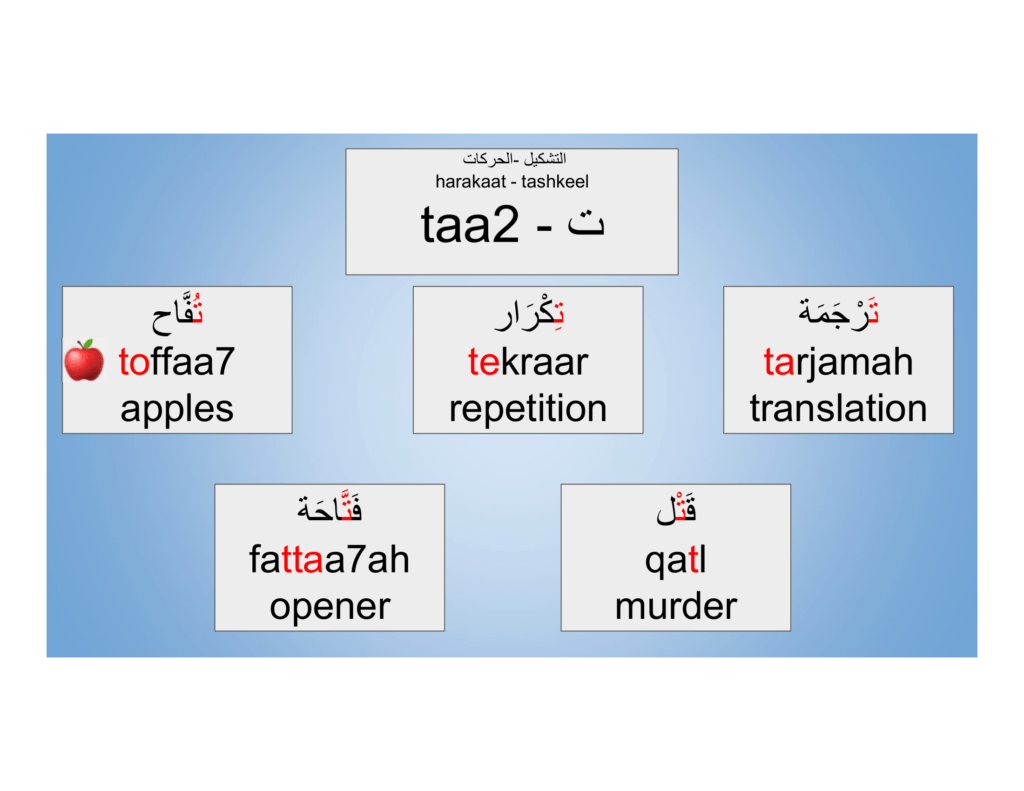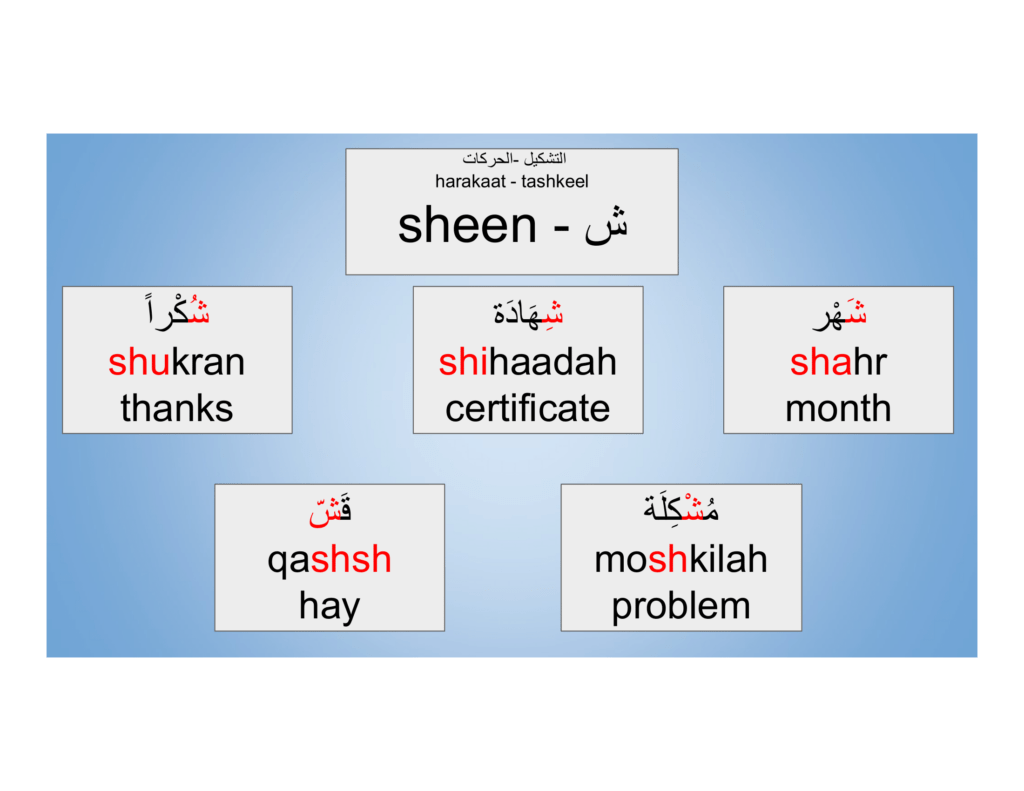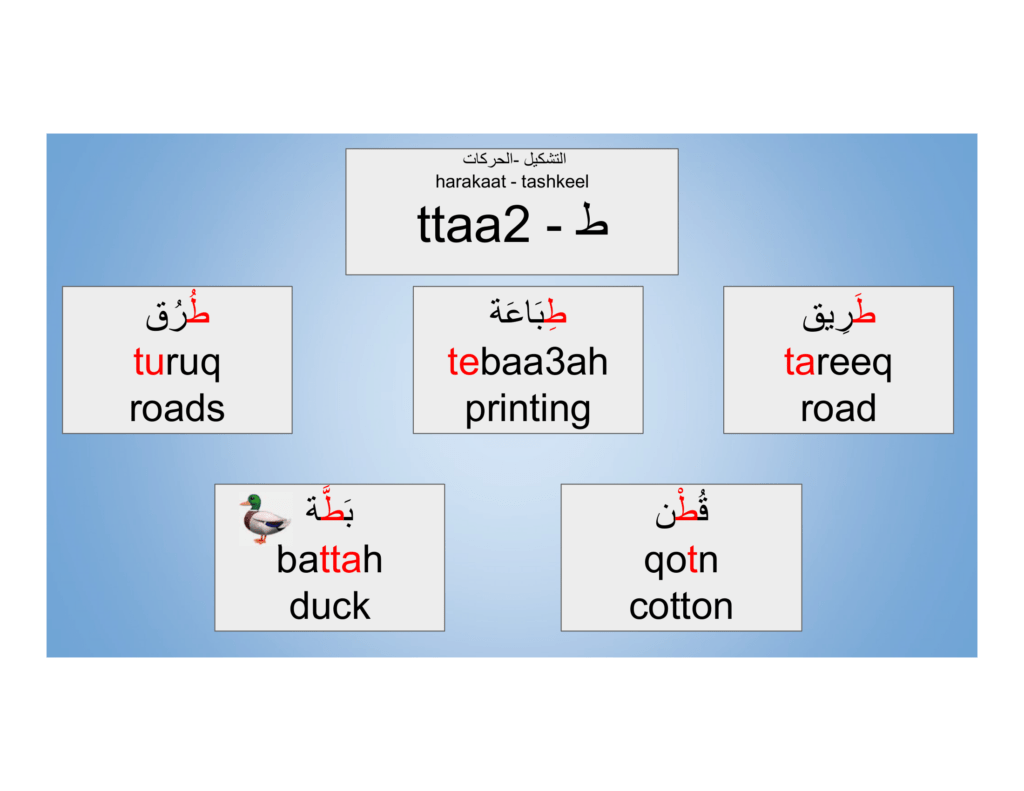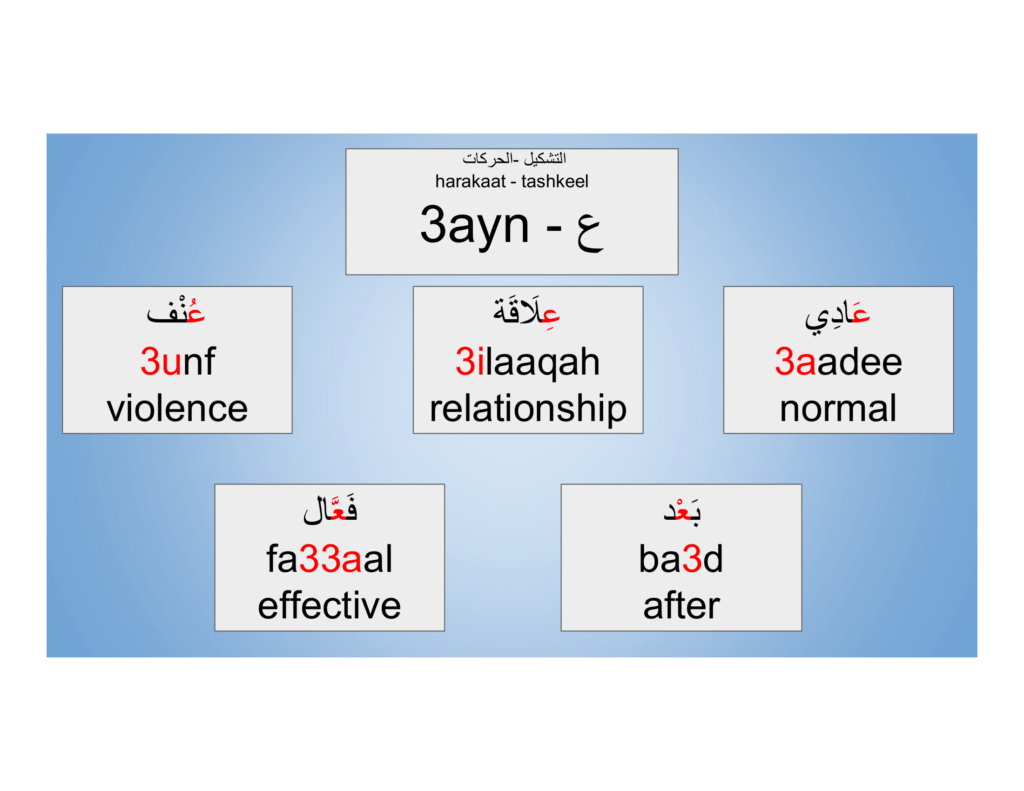In this lesson, we will learn Arabic diacritics/harakaat/tashkeel which give more information about the pronunciation of letters. Harakaat mainly include short vowels on letters (fat-hah = “a” sound; kasrah = “e” or “i” sound; and dammah = “o” or “u” sound). They also include sokoon which means there is no vowel after the letter. In addition, they include shaddah, which means doubling of the sound of the letter, which can be combined with either fat-hah, kasrah, or dammah.
In this album, we show each of these harakaat combined with each letter. It is important to know that these harakaat are mostly optional in Arabic writing, so it is useful to memorize the harakaat of each new word while learning it. Let us know about your questions and the challenges in your Arabic learning journey.


In this lesson, we can see the different diacritics when they apply to the Arabic letters.
Arabic harakaat in words
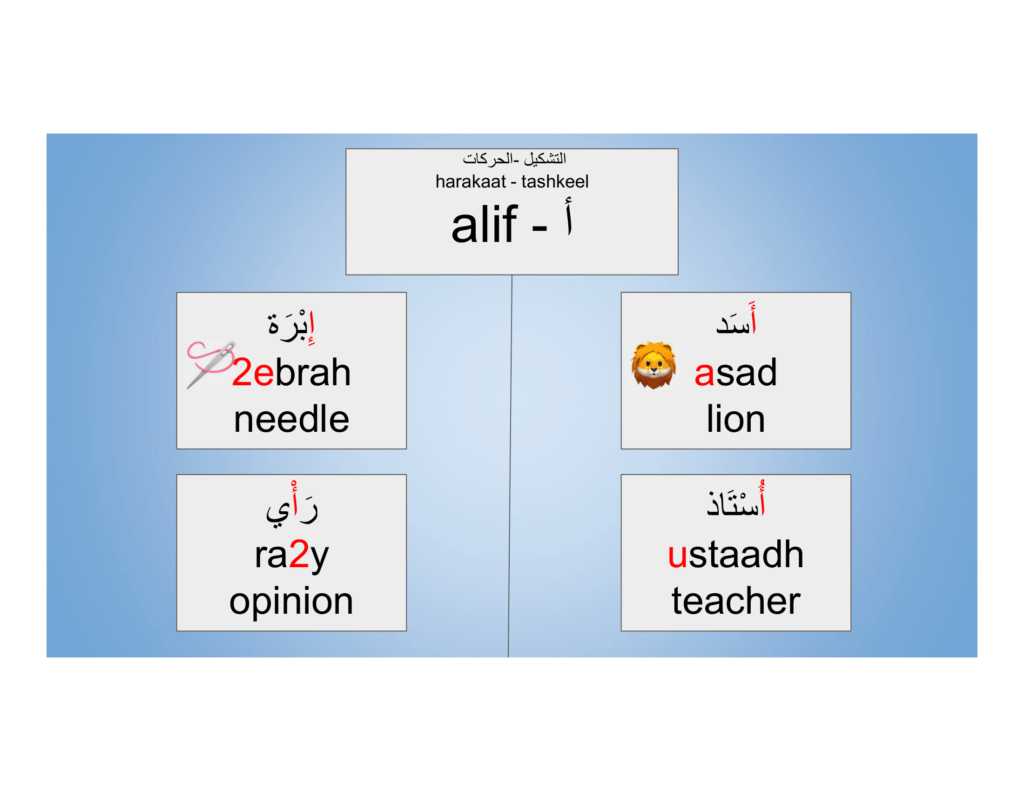
These above slides are part of our Arabic Reading Guide, and can be downloaded from there.
How to read Arabic without harakaat?
In the above, we learned how to read each letter when there are diacritics/harakaat. However, in most real-life written Arabic, these diacritics are rarely used. This can be a problem as some words can be ambiguous without harakaat. However, there are a few factors that can be helpful:
- The context: when you read a word, the context will easily indicate whether the ambiguous word is a noun or verb or something else.
- Vocabulary acquisition: when you learn a new word, learn it with its pronunciation (either by listening to its audio, read it with transliteration to latin characters, or find it in an Arabic dictionary with its harakaat)
- Learning grammar: when you learn grammar and morphology, you will learn that there are some standard templates used for Arabic words. When you identify the templates, you will be able to know the harakaat involved.
[email-subscribers-form id=”2″]


